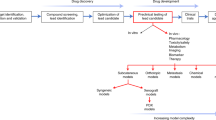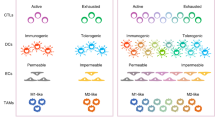Abstract
WHEN tumour cells are inoculated into syngeneic mice their establishment and growth is subject to regulation by the host animal. We have shown this most effectively for the inoculation of a broad range of tumours into anterior compared with posterior portions of the trunk1. For example, when mammary tumour cells were injected intradermally into thoracic compared with lumbar regions of adult histocompatible mice, tumour growth anteriorly became detectable by more rapid palpation, and tumour growth was three to four times as rapid anteriorly as posteriorly. This difference between anterior and posterior injection sites also became manifest after subcutaneous inoculation; it was apparent after inoculation of a wide variety of tumour types (mastocytoma, melanoma, lymphoma, sarcoma, mammary adenocarcinoma); it was independent of the sex of the host animal; it was found in a variety of mouse strains; and it did not seem to be related to the immunocompetence of the host or to the immunogenicity of the tumour1,7. We have now determined that there are antero-posterior and dorso-ventral differences in the growth of tumour cells inoculated intradermally into adult histocompatible mice. Although we have no explanation for our results we suggest that the observed differences may reflect the existence of morphogenetic gradients reminiscent of those invoked to explain patterns of differentiation during ontogeny.
This is a preview of subscription content, access via your institution
Access options
Subscribe to this journal
Receive 51 print issues and online access
$199.00 per year
only $3.90 per issue
Buy this article
- Purchase on Springer Link
- Instant access to full article PDF
Prices may be subject to local taxes which are calculated during checkout
Similar content being viewed by others
References
Auerbach, R., Morrissey, L. W. & Sidky, Y. A. Cancer Res. 38, 1739–1744 (1978).
Karnik, V. & Prehn, R. T. (in preparation).
Kobayashi, K. Cell Tiss. Res. 175, 319–324 (1976).
Auerbach, R. Wistar Institute Monograph, No. 1 Retention of Functional Differentiation in Cultured Cells 3–20 (Wistar Institute, Place, 1964).
Smith, A. R. & Wolpert, L. Nature 257, 224–225 (1975).
Auerbach, R., Morrissey, L. W., Kubai, L. & Sidky, Y. A. Int. J. Cancer (in the press).
Vaage, J. Meth. Cancer Res. 81, 33–58 (1973).
Author information
Authors and Affiliations
Rights and permissions
About this article
Cite this article
AUERBACH, R., MORRISSEY, L. & SIDKY, Y. Gradients in tumour growth. Nature 274, 697–699 (1978). https://doi.org/10.1038/274697a0
Received:
Accepted:
Issue Date:
DOI: https://doi.org/10.1038/274697a0
Comments
By submitting a comment you agree to abide by our Terms and Community Guidelines. If you find something abusive or that does not comply with our terms or guidelines please flag it as inappropriate.



